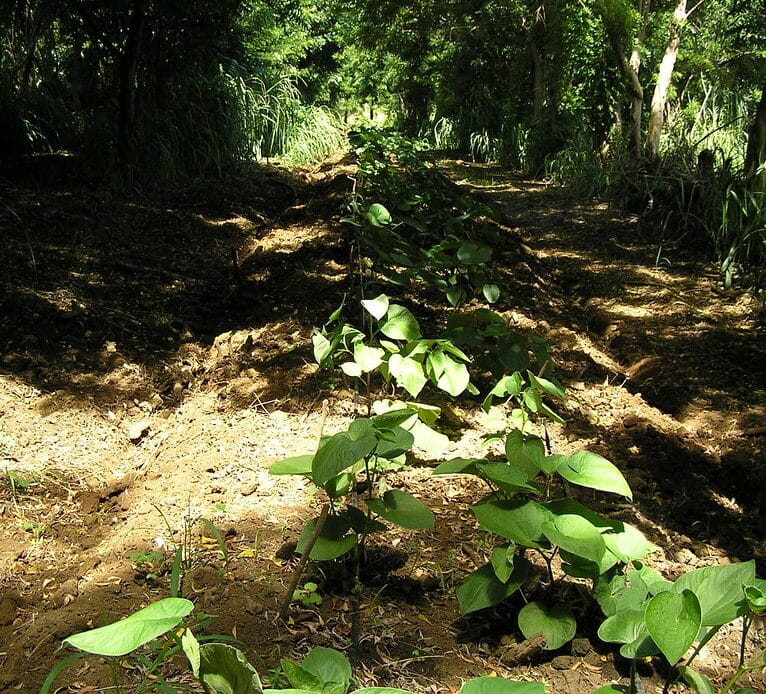
Kava, a plant native to the Pacific Islands, has been used for centuries for its calming and euphoric effects. Today, we will delve into the world of kava and compare two popular forms: micronized kava and traditional kava.
Traditional Kava: The Root of Relaxation
Traditional kava, often referred to as medium grind kava, is the most common form of this plant. It’s prepared by grinding the dried roots into a fine powder. This powder is then mixed with water and strained to create a potent beverage.
Preparation and Potency
The preparation of traditional kava is a bit of a process. It involves soaking the ground roots in water and then kneading and straining the mixture to extract the active components, known as kavalactones. This method is time-consuming but it’s worth the effort. The result is a strong, potent drink that’s been enjoyed by people for generations.
In addition to the traditional method, some people also use a blender or a kava press to speed up the extraction process without compromising potency. Different methods may result in varying levels of kavalactones in the final beverage, though the traditional method is widely believed to produce the most potent kava.
The Traditional Experience
Drinking traditional kava is more than just about the effects; it’s about the experience. The preparation process can be a social activity, and the act of drinking kava is often a communal event. The taste of traditional kava is earthy and strong, and while it might not be everyone’s cup of tea, it’s a big part of the kava experience.
Kava has deep cultural significance in many Pacific Island communities, such as Fiji, Vanuatu, and Tonga. Traditional ceremonies often involve preparing and consuming kava, accompanied by rituals and performances that honor ancestors and promote unity among people. Drinking kava in these settings fosters a sense of connection and belonging that is central to the traditional kava experience.
Micronized Kava: Instant Gratification
On the other hand, we have micronized kava. This form of kava is ground into an ultra-fine powder, which dissolves easily in water. It’s ready to drink in minutes, providing an instant kava experience.
Easy and Quick Preparation
The main advantage of micronized kava is its convenience. There’s no need for straining or kneading; just mix the powder with water and you’re good to go. This makes it a great option for those who want to enjoy kava without the hassle of traditional preparation.
Micronized kava’s quick and easy preparation makes it particularly attractive for busy lifestyles, when time is limited or when access to traditional preparation tools is not available. It also offers an appealing option for beginners or those looking to introduce kava to friends who may be hesitant to try the traditional method due to its time-consuming nature and strong taste.
Potency and Price
Micronized kava is often more potent than traditional kava. This is because the entire root, including the hard-to-extract kavalactones, is ground into the powder. However, this increased potency comes with a higher price tag. Micronized kava is generally more expensive than traditional kava, but many people find the convenience and strength worth the extra cost.
When choosing a type of kava, consider factors such as your budget, time constraints, and personal preferences for taste and potency. If you value tradition and don’t mind spending some time preparing the beverage, traditional kava might be the right choice for you. However, if convenience and a stronger, faster-acting kava experience are important, micronized kava could be the better option. Ultimately, the best type of kava for you will depend on your individual needs and desires.
So, which is better: micronized kava or traditional kava? Well, it depends on what you’re looking for. If you value tradition, enjoy the process of making kava, and don’t mind the strong taste, then traditional kava might be your best bet.
On the flip side, if you’re after convenience, don’t mind paying a bit more, and want a potent kava experience, then micronized kava could be the way to go.
Remember, everyone’s kava experience is unique. It’s all about finding what works best for you. So, whether you choose micronized or traditional, here’s to a great kava experience!
FAQs
Is micronized kava stronger?
Yes, micronized kava is typically stronger than traditional kava. This is because the entire root, including the hard-to-extract kavalactones, is ground into the powder.
What is the difference between micronized and medium kava?
The main difference between micronized and medium kava is the grind size and preparation. Micronized kava is ground into an ultra-fine powder that dissolves easily in water, while medium kava, also known as traditional kava, is coarser and needs
to be strained before drinking.
What is the best form of kava to take?
The best form of kava to take depends on your personal preferences. If you value tradition and don’t mind the preparation process, traditional kava might be best for you. If you prefer convenience and a stronger drink, micronized kava could be the way to go.
Is instant kava better than traditional kava?
“Better” is subjective when it comes to kava. Instant kava, which is similar to micronized kava, is more convenient and often more potent than traditional kava. However, traditional kava offers a unique, communal experience that some people prefer. It’s all about what you’re looking for in your kava experience.
Wrapping Up
In the end, whether you choose micronized kava or traditional kava, you’re in for a treat. Both offer the unique effects that kava is known for, just in different ways. So, go ahead and give both a try. You might just find that you enjoy the variety. After all, variety is the spice of life.
Remember, no matter which type of kava you choose, always consume responsibly. Kava is a powerful plant, and it’s important to respect its potency. So, here’s to a safe and enjoyable kava experience!